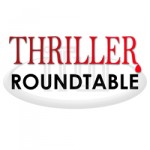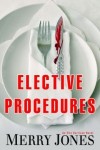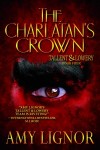

July 28 – August 2: “How has climate change affected the way we write about weather?”
 Weather was long a neglected stepchild in settings, with a few perfunctory descriptions at the start of a book along the lines of “It was a dark and stormy night.” Have concerns about climate change turned that around? Or has climate change become the next perfunctory aspect of setting? This week we join ITW Members Terri Anne Stanley, Merry Jones, J. H. Bográn, Susan Froetschel, Luke McCallin, Rachel Howzell Hall and Amy Lignor to discuss!
Weather was long a neglected stepchild in settings, with a few perfunctory descriptions at the start of a book along the lines of “It was a dark and stormy night.” Have concerns about climate change turned that around? Or has climate change become the next perfunctory aspect of setting? This week we join ITW Members Terri Anne Stanley, Merry Jones, J. H. Bográn, Susan Froetschel, Luke McCallin, Rachel Howzell Hall and Amy Lignor to discuss!
~~~~~
 Teri Anne Stanley has been writing since she could hold a crayon–though learning to read was a huge turning point in her growth as a writer. Teri’s first stories involved her favorite Saturday morning cartoon characters, followed by her favorite teen idols. She has also authored a recipe column (The Three Ingredient Gourmet), and scientific articles (Guess which was more interesting!). Now she writes fun, sexy romance filled with chaos and havoc, populated by strong, smart women and hunky heroes.
Teri Anne Stanley has been writing since she could hold a crayon–though learning to read was a huge turning point in her growth as a writer. Teri’s first stories involved her favorite Saturday morning cartoon characters, followed by her favorite teen idols. She has also authored a recipe column (The Three Ingredient Gourmet), and scientific articles (Guess which was more interesting!). Now she writes fun, sexy romance filled with chaos and havoc, populated by strong, smart women and hunky heroes.
 Merry Jones is the author of the Elle Harrison suspense novels (ELECTIVE PROCEDURES, THE TROUBLE WTH CHARLIE), the Harper Jennings thrillers (OUTSIDE EDEN, WINTER BREAK, BEHIND THE WALLS, SUMMER SESSSION), the Zoe Hayes mysteries (including THE NANNY MURDERS). She has also written humor (including I LOVE HIM, BUT…) and non-fiction (including BIRTHMOTHERS: Women who relinquished babies for adoption tell their stories.)
Merry Jones is the author of the Elle Harrison suspense novels (ELECTIVE PROCEDURES, THE TROUBLE WTH CHARLIE), the Harper Jennings thrillers (OUTSIDE EDEN, WINTER BREAK, BEHIND THE WALLS, SUMMER SESSSION), the Zoe Hayes mysteries (including THE NANNY MURDERS). She has also written humor (including I LOVE HIM, BUT…) and non-fiction (including BIRTHMOTHERS: Women who relinquished babies for adoption tell their stories.)
 As the daughter of a career librarian Amy Lignor grew up loving books; ‘Patience & Fortitude’ at the NYPL are still her heroes. Beginning in the genre of historical romance with, “THE HEART OF A LEGEND,” Amy moved into the YA world where her first team from THE ANGEL CHRONICLES became a beloved hit. Moving into the action/adventure world with TALLENT & LOWERY, Amy has created a new, incredibly suspenseful, team that has once again exploded with readers everywhere. Born in Connecticut, Amy is now living in the bright sunshine of Roswell, NM, delving into her next adventure.
As the daughter of a career librarian Amy Lignor grew up loving books; ‘Patience & Fortitude’ at the NYPL are still her heroes. Beginning in the genre of historical romance with, “THE HEART OF A LEGEND,” Amy moved into the YA world where her first team from THE ANGEL CHRONICLES became a beloved hit. Moving into the action/adventure world with TALLENT & LOWERY, Amy has created a new, incredibly suspenseful, team that has once again exploded with readers everywhere. Born in Connecticut, Amy is now living in the bright sunshine of Roswell, NM, delving into her next adventure.
 Luke McCallin was born in England, grew up in Africa, was educated around the world, and has worked with the UN as a humanitarian relief worker and peacekeeper in the Caucasus, the Sahel, and the Balkans. His experiences have driven his writing, in which he explores what happens to normal people put under abnormal pressures, inspiring a historical mystery series built around an unlikely protagonist, Gregor Reinhardt, a German intelligence officer and a former Berlin detective chased out of the police by the Nazis. THE MAN FROM BERLIN was published in 2013, followed by THE PALE HOUSE in 2014.
Luke McCallin was born in England, grew up in Africa, was educated around the world, and has worked with the UN as a humanitarian relief worker and peacekeeper in the Caucasus, the Sahel, and the Balkans. His experiences have driven his writing, in which he explores what happens to normal people put under abnormal pressures, inspiring a historical mystery series built around an unlikely protagonist, Gregor Reinhardt, a German intelligence officer and a former Berlin detective chased out of the police by the Nazis. THE MAN FROM BERLIN was published in 2013, followed by THE PALE HOUSE in 2014.
 Rachel Howzell Hall is the author of LAND OF SHADOWS (Forge), the first in the Detective Elouise Norton series, A QUIET STORM (Scribner), The View from Here and No One Knows You’re Here. Rachel is also a writer/assistant development director at City of Hope, a national leader in cancer research and treatment. She lives in Los Angeles with her husband and daughter.
Rachel Howzell Hall is the author of LAND OF SHADOWS (Forge), the first in the Detective Elouise Norton series, A QUIET STORM (Scribner), The View from Here and No One Knows You’re Here. Rachel is also a writer/assistant development director at City of Hope, a national leader in cancer research and treatment. She lives in Los Angeles with her husband and daughter.
 Susan Froetschel, a journalist, is the author of four mystery novels. She has come to agree with novelist John Hersey who noted, “Journalism allows its readers to witness history; fiction gives its readers an opportunity to live it.” In her books, she strives for suspense by developing characters who disagree with public policies that most others take for granted. She began her career in New York City working for Self, House Beautiful and Esquire magazines before moving to Alaska, where her reporting for a daily newspaper was recognized with national and state press awards. She later studied at Harvard’s Kennedy School of Government and has written about business, environmental protection, nonprofits, health care and more.
Susan Froetschel, a journalist, is the author of four mystery novels. She has come to agree with novelist John Hersey who noted, “Journalism allows its readers to witness history; fiction gives its readers an opportunity to live it.” In her books, she strives for suspense by developing characters who disagree with public policies that most others take for granted. She began her career in New York City working for Self, House Beautiful and Esquire magazines before moving to Alaska, where her reporting for a daily newspaper was recognized with national and state press awards. She later studied at Harvard’s Kennedy School of Government and has written about business, environmental protection, nonprofits, health care and more.
 J. H. Bográn, born and raised in Honduras, is the son of a journalist. He ironically prefers to write fiction rather than fact. José’s genre of choice is thrillers, but he likes to throw in a twist of romance into the mix. His works include novels and short stories in both English and Spanish. His debut novel TREASURE HUNT, which The Celebrity Café hails as an intriguing novel that provides interesting insight of architecture and the life of a fictional thief, has also been selected as the Top Ten in Preditors & Editor’s Reader Poll. FIREFALL, his second novel, was released in 2013 by Rebel ePublishers. Coffee Time Romance calls it “a taut, compelling mystery with a complex, well-drawn main character.” He’s a member of The Crime Writers Association, the Short Fiction Writers Guild and the International Thriller Writers where he also serves as the Thriller Roundtable Coordinator and contributor editor their official e-zine The Big Thrill. You can find him on his website, Facebook, Amazon and Twitter @JHBogran
J. H. Bográn, born and raised in Honduras, is the son of a journalist. He ironically prefers to write fiction rather than fact. José’s genre of choice is thrillers, but he likes to throw in a twist of romance into the mix. His works include novels and short stories in both English and Spanish. His debut novel TREASURE HUNT, which The Celebrity Café hails as an intriguing novel that provides interesting insight of architecture and the life of a fictional thief, has also been selected as the Top Ten in Preditors & Editor’s Reader Poll. FIREFALL, his second novel, was released in 2013 by Rebel ePublishers. Coffee Time Romance calls it “a taut, compelling mystery with a complex, well-drawn main character.” He’s a member of The Crime Writers Association, the Short Fiction Writers Guild and the International Thriller Writers where he also serves as the Thriller Roundtable Coordinator and contributor editor their official e-zine The Big Thrill. You can find him on his website, Facebook, Amazon and Twitter @JHBogran
- LAST GIRL MISSING with K.L. Murphy - July 25, 2024
- CHILD OF DUST with Yigal Zur - July 25, 2024
- THE RAVENWOOD CONSPIRACY with Michael Siverling - July 19, 2024
